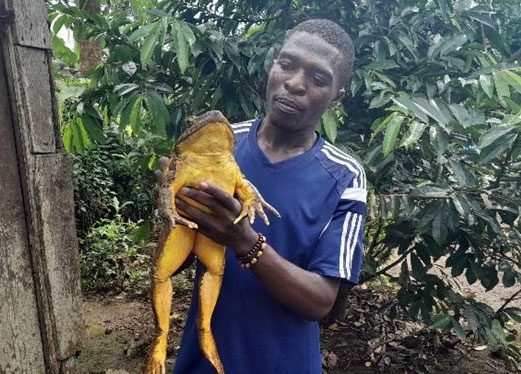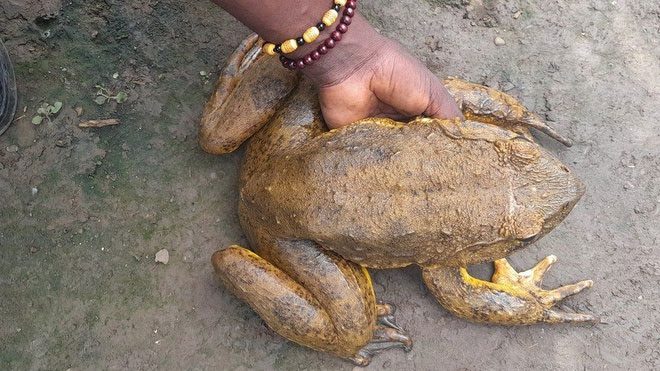The Goliath frog is a species of giant frog, found in the humid lowland areas of Central Africa, including Cameroon and Equatorial Guinea. It can grow as large as a cat; the Goliath frog is the largest frog in the world, according to the BBC.

Cedrick Fogwan holding one of the world record-breaking Goliath frogs. (Photo: BBC).
While holding a frog in his hands during a rescue mission, Cedrick described: “It’s like holding a baby.”
Cedrick has established a project advocating for the future of endangered species.
“When I discovered this unique frog – the largest frog in the world – I thought this is something we can’t easily find anywhere else, and I am proud of that,” Cedrick said.
“The local people say they are lucky to have something like this; they assign cultural value to the frog,” the conservationist added.

The Goliath frog can be as large as a cat, measuring 32 cm and weighing 3.25 kg. (Photo: BBC).
For decades, Goliath frogs have been overhunted for food and traded as pets in Cameroon and Equatorial Guinea.
Their habitats alongside rivers are rapidly being destroyed, and this species is now classified as endangered in the official Red List of endangered species.
This species of frog is not well-known scientifically, and even in Cameroon, many locals are unaware of their value to the ecosystem, including pest control for crops.
Cedrick’s conservation team has worked hard to persuade frog hunters to help document sightings of Goliath frogs instead of viewing them as food.
They are also collaborating with local groups to farm snails as an alternative food source.
The conservation efforts are beginning to pay off as Goliath frogs are returning to new rivers in the Nlonako Mountain Reserve.
A significant turning point came when Cedrick received a call from a former poacher who reported that his neighbor had caught a Goliath frog.
Cedrick was able to rescue the frog and return it to the wild.
“I believe that this species of frog will survive, and we can continue to be proud of that,” he said.
The Goliath frog conservation project is supported by the Conservation Leadership Programme (CLP), managed by Fauna & Flora International, BirdLife International, and the Wildlife Conservation Society.


















































